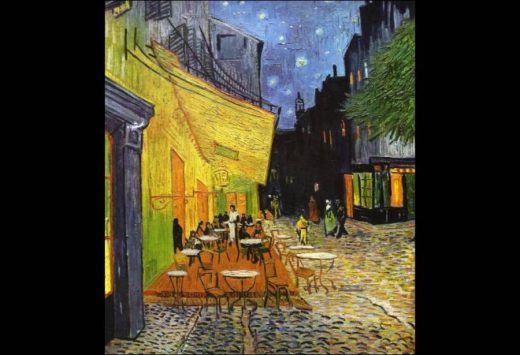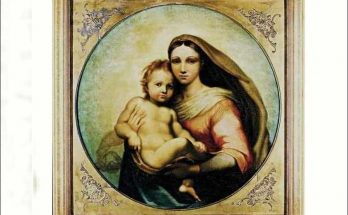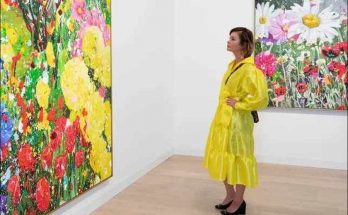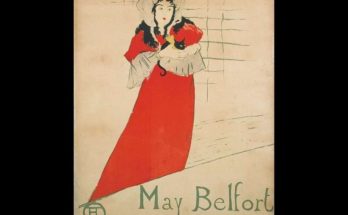Van Gogh wrote in his letter to Theo: ‘Here is a night painting for you with no black in it and only blue, violet and green tones’.
In this article, We will talk about Vincent Van Gogh’s work “Café Terrace at Night” painted in Arles in 1888. In the years when he started painting, Van Gogh started to get bored of his dark works with a charcoal pen on thick paper. He was looking for a new language. The Rubens paintings he saw when he went to Antwerp gave him the idea to color his own art as well.
However, his days in Antwerp were not very healthy. In a letter he told Theo that he only ate hot food six times in five months. His brother Theo also invited him to Paris. At that time, Paris was the center of painting. Theo, who works as an art dealer in Paris, said that he could introduce Van Gogh to many painters. Coming to Paris around 1886, Van Gogh met the Impressionists, the first compact modern art movement, here.
It was no longer the age of classical art, of the repertoire, of the strict rules of the academy. It was an age of innovation, of forward-looking, of artistic anarchy. Not only they, but also the Pointillism, who was seen as an advanced impressionism, were also mentioned in Paris.
These two painters, Georges Seurat and Paul Signac, were artists who greatly influenced Van Gogh with their pointillism and their colors and thoughts. During his stay in Paris, Van Gogh painted a lot of what can be called Impressionist paintings.
In his nearly 200 works, he used fast and distinct brush strokes on his canvas just like them. As with Monet’s ‘Impression/Sunrise’ and like any impressionist, Van Gogh struggled to capture the instantaneous ethic of light in the open air.
However, that wouldn’t be enough for him. Because, as many painters of the period said; “Impressionism could not go beyond the scope of the eye”. They were painting what they saw, wanted and felt, in Courbet’s words. But that wasn’t enough for Van Gogh. He always wanted to understand something, to express himself.
Impressionist narrative did not satisfy him.
Impressionists often distinguish themselves even by the name of their paintings. They mostly use expressions such as ‘sunrise, sunset’ in their paintings. The most important work in this field, Monet’s Impression, which I have just mentioned, is a very good example of this.
They want to transfer the instant effects of light to their canvases in a short time with fast brush strokes. That’s why they take their canvases to the open space and paint quickly. Van Gogh also loves this fast brushstroke technique. However, his method of using them is so important that it can be considered revolutionary in the history of art. He decides to leave Paris. He has some thoughts in mind.
He decides to go to Arles. This is a warm, summery area. Since nature is one of his favorite things since his childhood, this small and warm town was also good for Van Gogh’s soul. They want to transfer the instant effects of light to their canvases in a short time with fast brush strokes. That’s why they take their canvases to the open space and paint quickly.
Van Gogh also loves this fast brushstroke technique. However, his method of using them is so important that it can be considered revolutionary in the history of art. He decides to leave Paris. He has some thoughts in mind. He decides to go to Arles. This is a hot, summery area. Since nature has been one of his favorite things since childhood, this small and warm town was also good for Van Gogh’s soul.
Some of his paintings are night paintings. But he paints them outdoors, at that moment. He wants to strengthen the street lights, the brightness of the stars in the darkness of the night. Just like the impressionists, he makes snapshots outdoors. However, it does not follow the sun like them. He says: ‘I generally thought that the night had more vivid and richer colors than the day.’
This painting, which he reflected in the corner of the Palace de Forum, would undoubtedly be the precursor to the masterpiece ‘Starry Night’. It was said that Van Gogh was looking for the new and different. Shining stars in the famous deep Prussian Blue turned into a visual feast. The rapid brushstrokes from Impressionism were also beginning to take on a whole new meaning.
Van Gogh also did not like to use shadows. The absence of shadows in his paintings during this period, such as the Bedroom in Arles or Sunflowers, showed that he was trying to be different from the Impressionists who worked on light and shadow. The peaceful atmosphere we felt in the painting reflected the artist’s feelings of that period. Cool and peaceful. This was the biggest difference between him and the Starry Night he did when he was hospitalized in Saint de Province.
Especially his ‘Starry Night’ would have a great influence on Norwegian Edvard Munch. Inspired by this, he would make his famous work called “Suffocation/Scream” and start the expressionism movement. Fascinated by the strong and wild colors of Van Gogh, the fauvists would still be impressed by him, using their paints straight out of the tube.
After Van Gogh’s death, the fauvist painter Maurice de Vlaminck, who came to an exhibition held on his behalf, would shout at the exhibition; ‘I LOVE VAN GOGH MORE THAN MY FATHER!’ Van Gogh blooms like a sunflower in art history. It affects many movements and artists, teaches the whole art history the language of painting.
Visits: 96



